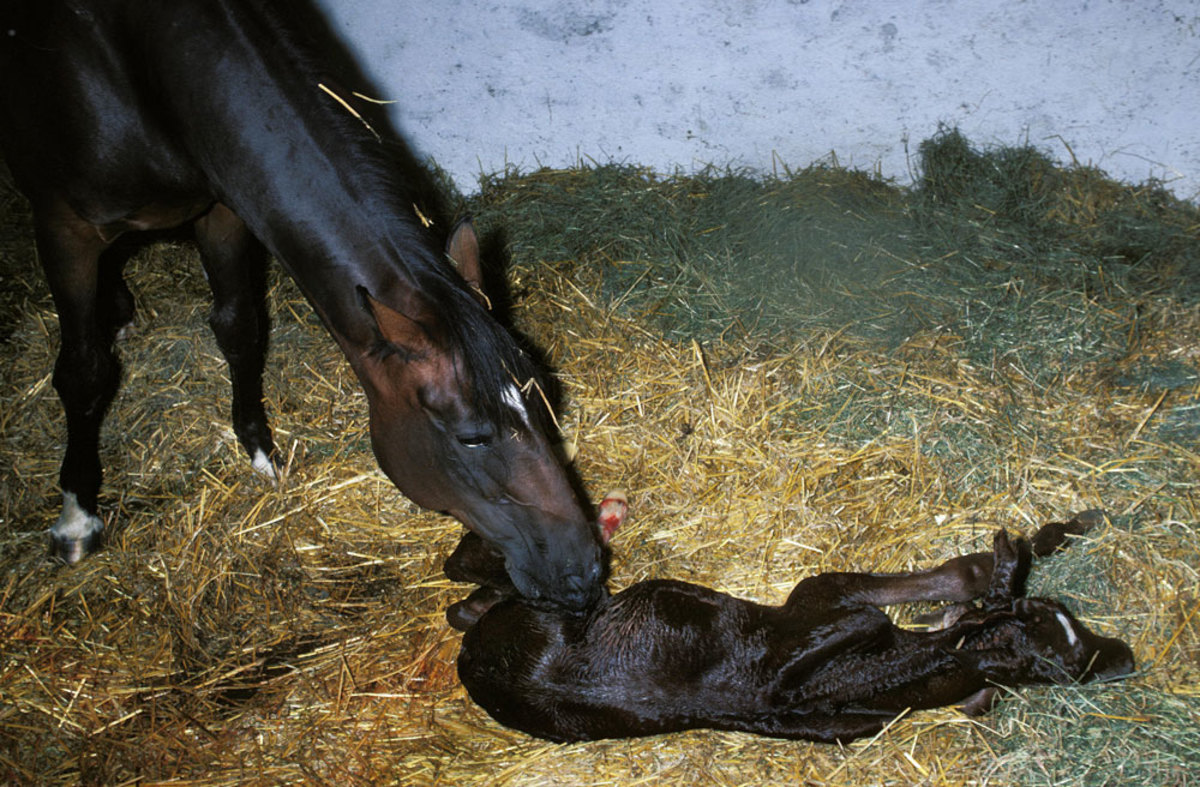
Following the rise in Nocardioform placentitis cases in Kentucky during the 2020 foaling season, experts met at the University of Kentucky’s Virtual Workshop on Nocardioform Placentitis to share their experiences with the disease. Mats Troedsson, DVM, PhD, DACT, DECAR, Professor of Equine Reproduction at Maxwell H. Gluck Equine Research Center, University of Kentucky, discussed his view on Nocardioform placentitis. He broke his presentation into three phases: 1) what we know about Nocardioform placentitis; 2) what we don’t know about this disease; and 3) what we need to know to improve our understanding of this condition.
What We Know
Nocardioform placentitis in Kentucky is most often associated with the Nocardioform actinomycetes Crosiella equi, Amycolatopsis spp. and Streptomyces spp. Usually, infections are observed following a hot, dry summer and fall.
According to Troedsson, “Nocardioform placentitis represents an unusual form of equine placentitis because it does not involve other fetal membranes or the fetus. Instead, insufficient placental support due to a separation from the uterus negatively affects fetal nutrition and the oxygen supply. This results in growth retardation of the fetus as well as late-term abortion.”
Currently, Nocardioform placentitis is diagnosed by transabdominal ultrasonography of the ventral aspect of the uterus. Characteristic findings include separation between the uterus and the chorion with hyperechoic fluid in the interphase.
Unfortunately, early detection of the disease prior to placental separation is not possible with this technique and no other diagnostic tools are currently available.
What We Don’t Know
“We have found that Nocardioform actinomycetes are associated with disease, but we actually have no conclusive evidence in any species that these organisms are actually pathogenic,” said Troedsson.
He went on to remind us of Koch’s postulates for proving that a microorganism causes disease.
The first postulate states that the micro-organism must be present in every case of the disease.
“This has not yet been met. There are many cases of focal placentitis consistent with Nocardioform placentitis, but we cannot detect any microorganism,” stated Troedsson.
The third postulate, which is also unmet, states that the disease must be reproduced with a pure culture of the microorganism into a healthy susceptible host.
“All of our attempts to induce disease with Nocardioform bacteria failed. Intrauterine, oral, inhalation, intravenous…all efforts failed. Not only could we not induce disease, we couldn’t recover any of the bacteria that were inoculated,” relayed Troedsson.
Overall, only one postulate, the second one, was fulfilled: the microorganism can be isolated from host with disease and grown in culture.
According to Troedsson, “This opens the possibility that there is another cause for the placentitis and that the Nocardioform are simply thriving where there was some sort of insult.”
The question also remains, where do the bacteria come from? How do they get to the uterus? Troedsson said that these bacteria have not been cultured from the mares’ environments.
Carleigh Fedorka, PhD, a postdoctoral scholar at the University of Kentucky’s Gluck Equine Research Center, in her presentation noted that treatment for placentitis, which is largely extrapolated from protocols to manage ascending placentitis, appear ineffective. (See the article from Fedorka’s presentation here.)
“Because we don’t have an experimental model, we can’t begin to develop treatment protocols,” she said. “We can’t perform any blinded controlled studies determine what treatment, if any, are needed.”
What We Need to Know
Troedsson identified two main areas for future research. First, he stated that we need to go back to basics and learn about the rudimentary etiology and epidemiology of Nocardioform to devise appropriate preventive strategies. Second, Troedsson echoed the message of other Workshop participants lamenting the need for an experimental model.
“Only when we have a model will we be able to understand the pathophysiology of Nocardioform placentitis. We will then be able to improve early diagnostics to design effective and targeted treatment,” Troedsson concluded.








